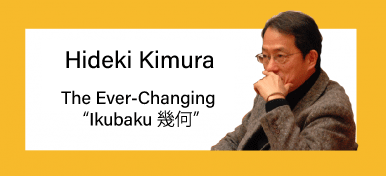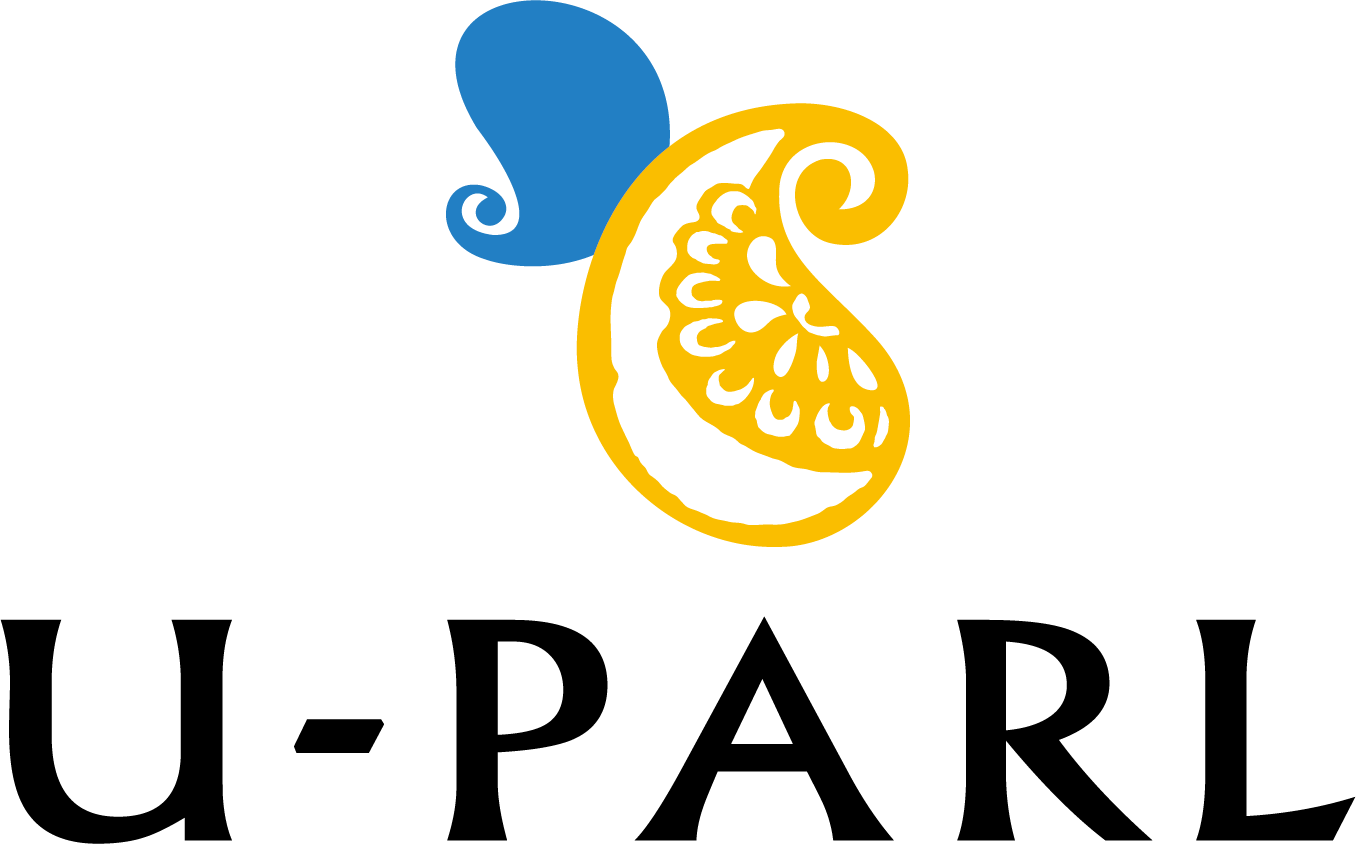
The Ever-Changing “Ikubaku 幾何”
Hideki KIMURA
U-PARL Project Leader & Concurrent Professor (Graduate School of Humanities and Sociology)
Most of the two-character compounds in the Japanese language were imported from China. The “幾何” (“what/how”) in “幾何学” (“geometry”) is also one of them. The “幾何” of the Chinese language formerly meant “how much” or “to what extent” and was used as an interrogative for questioning about quantity or volume. When reading Chinese text via the Japanese kundoku system, “幾何” is read “ikubaku.” For example, in the collection of political discourses written in the Spring and Autumn and the Warring States period titled Guanzi 管子, one sees the following example of its use:
Chinese: “問少壯而未勝甲兵者幾何人”
Japanese kundoku reading: “‘Shōsō ni shite imada kōhei ni taezaru mono ikubaku nin zo’ to tou”
English: “He asked, ‘How many men are there who, despite being young, are unable to engage in military service?’”
Here, “幾何人” is an interrogative, meaning “persons extending to what number?” or “how many people?” This “幾何” was later used by the Jesuit priest Matteo Ricci to translate the word “geometry” (in the book Jihe yuanben 幾何原本; 1607) and the nomenclature remains in use today. In contemporary Chinese, the word “幾何” is only used in the sense of “geometry”, and except in the case of very old-fashioned writing, is not used as an interrogative.
In the Chinese language as it is now read, written, and spoken daily, there are two types of interrogative used for questioning about amounts/volumes. These are “几” and “多少.” “几” is a simplified version of the character “幾” of “幾何” and is an interrogative for questioning about cardinal numbers. “Cardinal numbers” here refers to the integers 1–9. That is to say, “几 (幾)” is an interrogative that asks which is the correct number from among the nine numbers of 1 to 9. The term “几个人” thus asks, while assuming the number will be 9 or less, “How many people are there?” And, the term “几只猫” asks, again assuming the number will be 9 or less, “How many cats are there?” “个” and “只” are, respectively, the simplified versions of the classifiers “箇” [a classifier for individual items] and “隻” [a classifier for animals] . In this way, “几 (幾)” is always used while attached to a classifier. It cannot be used directly modifying a noun—for example as “几人” or “几猫”—without a classifier being included. Then, what must one say when asking about the number of cats when one assumes the number will exceed 9? In that case, one uses “多少” to ask “多少猫?” “多少” works in the same way as the “幾何” of classical Chinese, and can directly modify a noun without enlisting the help of a classifier. In any case, the “幾何” that formerly acted as an interrogative is no longer used as such in contemporary Chinese. It is only the “几 (幾)” of “幾何” that has survived as an interrogative for questioning about cardinal numbers.
Well, with what sort of fate did the “何” of “幾何” eventually meet? Unfortunately, in contemporary Chinese—let alone keeping its meaning as an interrogative—it no longer even functions as a word. In olden times, “何” was used as an interrogative to mean “what” or “where,” even on its own, but in contemporary everyday speech “what” has been replaced with “什么” and “where” has been replaced with “哪里.” There is no role left for “何” at all. It is, of course, not used in questioning about amount or volume either. The original function of “何” as a numerical interrogative has now been completely taken over by “几 (幾)” alone. The life of “何” as an interrogative did not extend into contemporary Chinese and died out long ago.
However, the world is as kind as it is cruel. “何” made the long journey over the sea to Japan, and it is now doing an outstanding job as an interrogative in the form of a Chinese character in the contemporary Japanese language. This “何,” which lost its place as a numerical interrogative in its home country, was resoundingly resuscitated in the foreign country of Japan, and its current importance as a numerical interrogative shows its touching indomitability.
In Japanese there are two types of interrogative used in questioning amounts and volumes. These are “iku” and “nan.” “Nan” is a euphonic change form of “nani,” and is originally a native Japanese term. “Iku” is also a Japanese term. At some unknown point, “iku” and “nani” had the kanji characters “幾” and “何” assigned to them respectively. Considering this in conjunction with the decline of “幾何” in Chinese is really quite interesting. Putting that aside, however, “iku” and “nan” are both used attached to a classifier. In this regard, they share a similarity with “几 (幾)” in Chinese. Here, I will provisionally refer to interrogative terms composed of “iku 幾” together with a classifier as “幾-type,” and I will refer to interrogatives composed of “nan 何” and a classifier as “何-type.” For example, the term “iku-tabi 幾たび ” (“how many times?”), pronounced in the native Japanese kun’yomi style, would be 幾-type, and the term “何度 (nan-do)” (“how many times?”), pronounced in the Sino-Japanese on’yomi style, would be 何-type.
幾-type and 何-type came about at different points in history. The establishment of 幾-type, with its use in conjunction with the historic Japanese classifier “tsu,” obviously predates 何-type. One may say “iku-tsu” but not “nan-tsu.” In the corpus, too, one can already see numerous examples of 幾-type in ancient Japanese literature such as the Nihon shoki, but 何-type does not appear in the old literature at all. One only begins to see scattered examples of 何-type in kyōgen segments from noh/kabuki plays and in early Japanese Christian materials from the Muromachi period onward.
However, coming up through the centuries, the situation changes. 何-type shows itself increasingly more often now in contemporary Japanese—if one excludes examples like “ikutsu” and “ikura” where the “tsu” and “ra” are no longer consciously thought of as classifiers—the usage frequency of 幾-type is not even close to that of 何-type. Almost any Japanese speaker would say, “are kara nan-nen tachimashita ka?” (“what [number of] years have passed since then?”), but it would be very hard to find someone who would say, “are kara iku-nen tachimashita ka?” (“how [many] years have passed since then?”). Regarding the classifier affixed, too, in the case of “iku 幾,” basically its forms are limited to a small number of native Japanese-derived words such as “iku-tōri 幾通り” (“several/what ways”) and “iku-heya 幾部屋” (“several/what rooms”). The contemporary “iku 幾” has extremely poor compatibility with Chinese classifiers. The words “iku-ko 幾個” (“several/what items”) “iku-kai 幾回” (“several/how many times”) “iku-dai 幾台” (“several/what large items”), and “iku-hon 幾本” (“several/what cylindrical items”) are all unnatural. Conversely, 何-type can be attached to any sort of Chinese classifier. In fact, it can even be attached to native Japanese-type classifiers, as is the case with “nan-tōri 何通り” (“several/what ways”) and “nan-heya 何部屋” (“several/what rooms”). Thus, the frequency of the use of “何” naturally grows.
The role of “何” doesn’t just stop there. “何” can also be used to signify the interrogative pronoun “nani,” which questions events and objects. As is the case with “how many” and “what” in English, many of the world’s languages employ different interrogative expressions for questioning amounts and volumes, on one the hand, and for events and objects, on the other. This is not the case with Japanese. In Japanese, the same morpheme (despite the “nan/nani” euphonic variation in its pronunciation) is used as the interrogative for both amounts and volumes, and for events and objects, and this is expressed in the single character “何,” making it a rare example among the world’s languages.
Thus grows the usage frequency of “何” in contemporary Japanese. One cannot compare in a straightforward way the “几 (幾)” that functions as a word in contemporary Chinese and the “何” that functions as Chinese character-based signifier in contemporary Japanese. However, if the reader will forgive a brash summary, if one only looks at the problem in terms of “symbols,” as far as symbols for expressing interrogatives go, “何” throws its weight around far more than does “几 (幾).” With the importance it is now given in a foreign land, it’s as if “何” is looking back in triumph over its old friend “几 (幾),” who it left behind in its home country. As they say in the Major Leagues, “何” was “left on the bench” in China, but after moving overseas in despair it was picked up by a Japanese ball team and it got its big break. With its rugged shoulders and its back to home, “何” went on to become a regular all-star game headliner. Perhaps it is just me that has this strangely sentimental view of “何”?
Returning to the discussion of 何-type, there are a few mysteries that remain about this type of interrogative expression and the history leading up to its unshakable position in the Japanese language today. The first mystery is how, although 幾-type already existed in Japanese, 何-type was so warmly welcomed in? In Chinese, from the pre-Qin period until today, there is not one single example in the literature where “何” is used as an interrogative for questioning amount or volume, whether it be as a word on its own or whether it be as a compound in combination with a classifier. Therefore, there can be no doubt the Japanese何-type was not imported from the Chinese language—that is to say, it must have come about on its own within the context of the Japanese language. Perhaps, it is the case that, at some point for some reason, “何” was used in the place of “幾” in a 幾-type construction and that form gradually spread. It may well be that the existence of the Chinese language “幾何” played a large role in this.
Phonology is another mystery. “何” has also been used in Japanese since ancient times in the sense of the question word “nani.” In old works such as the Nihon shoki and Fudoki, one can already see many examples. Then, when the 何-type that questions amount and volume was first established, was that “何” pronounced the same way as the “何” that questions events and objects? Or, was it that, from the beginning, there was some sort of method that differentiated the sounds, as is the case with “nani” and “nan” in the contemporary language? It appears these mysteries are yet to have been solved in the field of Japanese linguistics studies.
On the topic of being solved, the details are still unclear as to when exactly the Chinese “幾何” stopped being used as an interrogative. It is also unclear when the contemporary “几” and “多少” came into use. I will leave the situation with the Japanese language up to the specialists in Japanese; but, as someone who makes it his livelihood to study the Chinese language, I cannot ignore the mysteries in Chinese. In all events, first we must look to the Zhongguo jiben guji ku 中國基本古籍庫 (Database of Chinese Classic Ancient Books).

